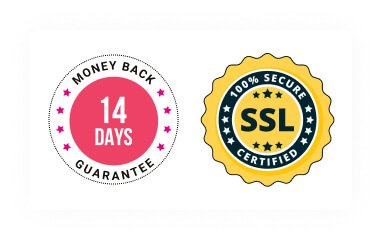Course Curriculum
| Induction Form | |||
| Induction Form | 00:05:00 | ||
| Registration Entry Form | |||
| Registration Entry Form | 00:05:00 | ||
| Unit 1: Principles of Business | |||
| Support Materials | |||
| 1. Characteristics of Different Business Markets | 00:00:00 | ||
| 2. The Nature of Interactions between Businesses within a Market | 00:00:00 | ||
| 3. How an Organisation’s Goals may be Shaped by the Market in Which it Operates | 00:00:00 | ||
| 4. Legal Obligations of a Business | 00:00:00 | ||
| 5. Business Innovation Models | 00:00:00 | ||
| 6. Sources of Support and Guidance for Business Innovation | 00:00:00 | ||
| 7. The Process for New Product or Service Development | 00:00:00 | ||
| 8. Benefits, Risks and Implications Associated with Innovation | 00:00:00 | ||
| 9. Importance of Financial Viability for an Organisation | 00:00:00 | ||
| 10. Must-Know Financial Terminologies | 00:00:00 | ||
| 11. Basics of Business Budgeting | 00:00:00 | ||
| 12. Budget Management | 00:00:00 | ||
| 13. Principles of Marketing | 00:00:00 | ||
| 14. Sales Process | 00:00:00 | ||
| 15. Features and Uses of Market Research | 00:00:00 | ||
| 16. The Value of a Brand to an Organisation | 00:00:00 | ||
| 17. Relationship between Sales and Marketing | 00:00:00 | ||
| Assignments: Unit 1: Principles of Business | |||
| Assignments: Unit 1: Principles of Business | 00:00:00 | ||
| Unit 2: Principles of Business Communication and Information | |||
| Support Materials | |||
| 1. Negotiation in a Business Environment | 00:00:00 | ||
| 2. Different Types of Presentation and Their Requirements | 00:00:00 | ||
| 3. Use of Different Presentation Media | 00:00:00 | ||
| 4. Deliver a Presentation | 00:00:00 | ||
| 5. Using Feedback | 00:00:00 | ||
| 6. How to Create Bespoke Business Documents | 00:00:00 | ||
| 7. Information Systems in a Business Environment | 00:00:00 | ||
| Assignments: Unit 2: Principles of Business Communication and Information | |||
| Assignments: Unit 2: Principles of Business Communication and Information | 00:00:00 | ||
| Unit 3: Communicate in a Business Environment | |||
| Support Materials | |||
| 1. The Communication Needs of Internal and External Stakeholders2 | 00:00:00 | ||
| 2. The Different Communication Models that Support Administration2 | 00:00:00 | ||
| 3. The Effectiveness of Different Communication Systems2 | 00:00:00 | ||
| 4. Factors that Affect the Choice of Communication Media2 | 00:00:00 | ||
| 5. Importance of Using Correct Grammar, Sentence Structure, Punctuation, Spelling and Conventions in Business Communications2 | 00:00:00 | ||
| 6. Factors to be Taken into Account in Planning and Structuring Different Communication Media2 | 00:00:00 | ||
| 7. Ways of Overcoming Barriers to Communication2 | 00:00:00 | ||
| 8. The Use of Communications Theories and Body Language2 | 00:00:00 | ||
| 9. Proof-reading Techniques for Business Communications2 | 00:00:00 | ||
| 10. The Purpose and Audience of the Information to be Communicated2 | 00:00:00 | ||
| 11. Communication Media that are Appropriate to the Audience and Information to be Communicated2 | 00:00:00 | ||
| 12. Format Layout and Style of Business Communication2 | 00:00:00 | ||
| 13. Business Practices when Communicating in Writing2 | 00:00:00 | ||
| 14. The Style and Content of a Communication Appropriate to Specific Audiences2 | 00:00:00 | ||
| 15. Present Written Communications that are Clear2 | 00:00:00 | ||
| 16. Meet Agreed Deadlines in Communicating with Others2 | 00:00:00 | ||
| 17. The Nature, Purpose, Audience and Use of the Information to be Communicated2 | 00:00:00 | ||
| 18. Use Language that is Correct and Appropriate for the Audience’s Needs2 | 00:00:00 | ||
| 19. Use Appropriate Body Language and Tone of Voice to Reinforce Messages2 | 00:00:00 | ||
| 20. The Meaning and Implications of Information that is Communicated Verbally2 | 00:00:00 | ||
| 21. Confirming that a Recipient has Understood Correctly What has been Communicated2 | 00:00:00 | ||
| 22. Respond in a Way that is Appropriate to the Situation and in Accordance with Organisational Policies and Standards2 | 00:00:00 | ||
| Assignments: Unit 3: Communicate in a Business Environment | |||
| Assignments: Unit 3: Communicate in a Business Environment | 00:00:00 | ||
| Unit 4: Principles of Administration | |||
| Support Materials | |||
| 1. The Legal Requirements Relating to the Management of Office Facilities | 00:00:00 | ||
| 2. Typical Services Provide by Office Facility | 00:00:00 | ||
| 3. How to Establish Office Management Procedure | 00:00:00 | ||
| 4. Office Environment | 00:00:00 | ||
| 5. How to Manage Office Resources | 00:00:00 | ||
| 6. Monitoring | 00:00:00 | ||
| 7. The Legal Obligations of the Employer for Health and Safety in the Workplace | 00:00:00 | ||
| 8. An Individual’s Responsibilities for Health and Safety in the Workplace | 00:00:00 | ||
| 9. Workplace Emergency | 00:00:00 | ||
| 10. Purpose of Meeting Minutes | 00:00:00 | ||
| 11. The Legal Requirement of Minutes | 00:00:00 | ||
| 12. What Should and Should Not Be Included in Meeting Minutes | 00:00:00 | ||
| 13. Taking and Structuring Notes | 00:00:00 | ||
| 14. Features and Purpose of Formal and Informal Meeting | 00:00:00 | ||
| 15. Key Aspects of the Chairman’s Role and Responsibilities | 00:00:00 | ||
| 16. The Different Roles in a Business Meeting | 00:00:00 | ||
| 17. Meeting Facilitation | 00:00:00 | ||
| 18. Information Requirements of a Meeting Before, During and After a Meeting | 00:00:00 | ||
| 19. Use of Targets and Budgets to Manage Workloads | 00:00:00 | ||
| 20. Task Allocation | 00:00:00 | ||
| 21. Quality Management Techniques | 00:00:00 | ||
| 22. Techniques Used to Identify the Need for Improvements in Team Outputs and Standards | 00:00:00 | ||
| 23. Purpose and Features of Different Types of Business Events | 00:00:00 | ||
| 24. How to Plan an Event | 00:00:00 | ||
| 25. Information Resources for an Event | 00:00:00 | ||
| Assignments: Unit 4: Principles of Administration | |||
| Assignments: Unit 4: Principles of Administration | 00:00:00 | ||
| Unit 5: Manage Personal and Professional Development | |||
| Support Materials | |||
| 1. Sources of Information on Professional Development Trends and Their Validity | 00:00:00 | ||
| 2. Trends and Developments that Influence the Need for Professional Development | 00:00:00 | ||
| 3. Benefits of Personal and Professional Development | 00:00:00 | ||
| 4. The Basis on Which Different Types of Development Actions are Selected | 00:00:00 | ||
| 5. Evaluating Current and Future Personal and Professional Development Needs | 00:00:00 | ||
| 6. Identifying Current and Future Likely Skills and Knowledge Needs Using Skills Gap Analysis | 00:00:00 | ||
| 7. How to Set SMART Objectives | 00:00:00 | ||
| 8. Agreeing a Personal and Professional Development Plan | 00:00:00 | ||
| 9. Obtaining Feedback on Performance | 00:00:00 | ||
| 10. Reviewing Progress Toward Personal and Professional Objectives | 00:00:00 | ||
| Evaluate Whether your PDP Goals Are SMART | 00:00:00 | ||
| Personal Action Plan for PDP | 00:00:00 | ||
| Assignments: Unit 5: Manage Personal and Professional Development | |||
| Assignments: Unit 5: Manage Personal and Professional Development | 00:00:00 | ||
| Unit 10: Develop a Presentation | |||
| Support Materials | |||
| 1. Best Practice in Developing Presentations | 00:00:00 | ||
| 2. Who Needs to Be Consulted on the Development of a Presentation | 00:00:00 | ||
| 3. The Factors to Be Taken Into Account in Developing a Presentation | 00:00:00 | ||
| 4. The Advantages and Limitations of Different Communication Media | 00:00:00 | ||
| 5. Tailor Your Presentation to Fit the Timescale and Audience | 00:00:00 | ||
| 6. Action to Ensure That a Presentation Adheres to Organisational Guidelines and Policies | 00:00:00 | ||
| 7. Materials That Support the Content of a Presentation | 00:00:00 | ||
| Assignments: Unit 10: Develop a Presentation | |||
| Assignments: Unit 10: Develop a Presentation | 00:00:00 | ||
| Unit 11: Manage an Office Facility | |||
| Support Materials | |||
| 1. Establish and Implement Office Management Procedure | 00:00:00 | ||
| 2. Manage the Effectiveness of Work and Systems | 00:00:00 | ||
| 3. Managing any Constraints Attached to Office Facilities and Related Budgets | 00:00:00 | ||
| 4. Factors to Be Taken into Account in the Design of Office Systems, Procedures and Guidance Documents | 00:00:00 | ||
| 5. Office Environment | 00:00:00 | ||
| 6. Maintain Equipment and Consumables | 00:00:00 | ||
| 7. Office Systems and Procedure | 00:00:00 | ||
| 8. Manage the Maintenance of Office Equipment | 00:00:00 | ||
| 9. Supplier Relationship Management | 00:00:00 | ||
| 10. The Concept of Business Administration | 00:00:00 | ||
| Assignments: Unit 11: Manage an Office Facility | |||
| Assignments: Unit 11: Manage an Office Facility | 00:00:00 | ||
| Unit 14: Deliver a Presentation | |||
| Support Materials | |||
| 1. The Advantages and Limitations of Different Methods of | 00:00:00 | ||
| 2. How the Type and Size of the Audience Affects the Delivery of a Presentation | 00:00:00 | ||
| 3. The Factors to Be Taken Into Account in Developing Contingency Plans When Delivering Presentations | 00:00:00 | ||
| 4. Voice Projection and Timing Techniques | 00:00:00 | ||
| 5. The Factors to Be Taken Into Account in Responding to Questions From an Audience | 00:00:00 | ||
| 6. Different Methods for Evaluating the Effectiveness of a Presentation | 00:00:00 | ||
| 7. The Layout of the Venue and Correct Functioning of Equipment and Resources | 00:00:00 | ||
| 8. Using Appropriate Language and Tone of Voice in Delivering a Presentation | 00:00:00 | ||
| 9. Body Language in Delivering Presentation. | 00:00:00 | ||
| 10. Using Equipment and Resources Effectively When Delivering a Presentation | 00:00:00 | ||
| Assignments: Unit 14: Deliver a Presentation | |||
| Assignments: Unit 14: Deliver a Presentation | 00:00:00 | ||
| Unit 32 Produce minutes of meetings (3 credits) | |||
| Support Materials | |||
| 1. Purpose of Different Types of Minutes and Other Meeting Records | 00:00:00 | ||
| 2. The Legal Requirements of Formal Minutes | 00:00:00 | ||
| 3. Organisational Conventions for Producing Minutes | 00:00:00 | ||
| 4. The Responsibilities of the Minute Taker in a Meeting | 00:00:00 | ||
| 5. The Importance of Maintaining Confidentiality of Meetings | 00:00:00 | ||
| 6. Taking and Structuring Notes | 00:00:00 | ||
| 7. Sections of a Meeting | 00:00:00 | ||
| 8. Recording Decisions and Actions | 00:00:00 | ||
| 9. Business English for Minutes | 00:00:00 | ||
| 10. Layout and Numbering | 00:00:00 | ||
| 11. Obtaining Approval and Distributing Minutes | 00:00:00 | ||
| 12. The Minutes | 00:00:00 | ||
| 13. Maintaining the Requirements of Confidentiality | 00:00:00 | ||
| Assignments: Unit 32 Produce Minutes of Meeting | |||
| Assignments: Unit 32 Produce Minutes of Meeting | 00:00:00 | ||
| Unit 39 Manage Team Performance | |||
| Support Materials | |||
| 1. Use of Benchmarks in Managing Performance | 00:00:00 | ||
| 2. A Range of Quality Management Techniques to Manage Team Performance | 00:00:00 | ||
| 3. Identifying Team Member Strengths | 00:00:00 | ||
| 4 How To Successfully Allocate Work To Your Team | 00:00:00 | ||
| 5. Improvement in Team Members Productivity. | 00:00:00 | ||
| 6. Amend Priorities and Plans to Take Account of Changing Circumstances. | 00:00:00 | ||
| 7. Recommend Changes to Systems and Processes to Improve the Quality of Work | 00:00:00 | ||
| 8. The Lines of Communication and Authority Levels | 00:00:00 | ||
| 9. Communicating Effectively within Team That Are Appropriate | 00:00:00 | ||
| 10. Provide Support to Team Members When They Need It | 00:00:00 | ||
| 11. Providing Feedback | 00:00:00 | ||
| 12. Effectiveness of Team Communications and Make Improvements. | 00:00:00 | ||
| Assignments: Unit 39 Manage Team Performance | |||
| Assignments: Unit 39 Manage Team Performance | 00:00:00 | ||
| Unit 45: Promote Equality, Diversity and Inclusion in the Workplace | |||
| Support Materials | |||
| 1. Equality, Diversity and Inclusion | 00:00:00 | ||
| 2. The Impact of Equality, Diversity and Inclusion Across Aspects of Organisational Policy | 00:00:00 | ||
| 3. The Potential Consequences of Breaches of Equality Legislation. | 00:00:00 | ||
| 4. Nominated Responsibilities Within an Organization for Equality, Diversity and Inclusion. | 00:00:00 | ||
| 5. Different Forms of Discrimination and Harassment. | 00:00:00 | ||
| 6. The Characteristics and Importance of Behaviour That Supports Equality, Diversity and Inclusion in the Workplace. | 00:00:00 | ||
| 7. Ensuring That Colleagues Are Aware of Their Responsibilities for Equality, Diversity and Inclusion in the Workplace | 00:00:00 | ||
| 8. Potential Issues Relating to Equality, Diversity and Inclusion in the Workplace. | 00:00:00 | ||
| 9. Organisational Policies and Procedures, and Legal and Ethical Requirements When Supporting Equality, Diversity and Inclusion in the Workplace. | 00:00:00 | ||
| Assignments: Unit 45: Promote Equality, Diversity and Inclusion in the Workplace | |||
| Assignments: Unit 45: Promote Equality, Diversity and Inclusion in the Workplace | 00:00:00 | ||
| Unit 52 Using email (3 credits) | |||
| Support Materials | |||
| 1. Select and Use Software Tools to Compose and Format Email Messages, including Attachments | 00:00:00 | ||
| 2. The Message Size and How It Can be Reduced | 00:00:00 | ||
| 3. Send Email Messages to Individuals and Groups | 00:00:00 | ||
| 4. Stay Safe and Respect Others When Using Email | 00:00:00 | ||
| 5. Use an Address Book to Organise Contact Information | 00:00:00 | ||
| 6. Follow Guidelines and Procedures for Using Email | 00:00:00 | ||
| 7. Read and Respond to Email Messages Appropriately | 00:00:00 | ||
| 8. Use Email Software Tools and Techniques to Automate Responses | 00:00:00 | ||
| 9. Archive Email Messages | 00:00:00 | ||
| 10. Organise, Store and Archive Email Messages Effectively | 00:00:00 | ||
| Assignments: Unit 52 Using email | |||
| Assignments: Unit 52 Using email | 00:00:00 | ||
| Unit 67: Principles of Marketing Stakeholder Relationships | |||
| Support Materials | |||
| 1. The Need for Marketing Stakeholder Relationships | 00:00:00 | ||
| 2. The Use of Stakeholder Mapping in Developing Ways of Building Relationships | 00:00:00 | ||
| 3. The Nature of Interest of Different Stakeholder Groups. | 00:00:00 | ||
| 4. The Significance of Stakeholders to the Achievement of the Overall Marketing Strategy. | 00:00:00 | ||
| 5. The Features of the Market in Which Stakeholders Operate. | 00:00:00 | ||
| 6. Establishing Stakeholders’ Attitudes to an Organisation. | 00:00:00 | ||
| 7. Actual and Potential Synergies and Conflicts Between Clients and Other Stakeholders. | 00:00:00 | ||
| 8. How to Identify Common Goals and Potential Synergy Between Stakeholders and an Organization. | 00:00:00 | ||
| 9. The Importance of Engaging Stakeholders in Marketing Activities | 00:00:00 | ||
| 10. Stakeholder Communications Plans. | 00:00:00 | ||
| 11. The Requirements of a Competitor Management Strategy. | 00:00:00 | ||
| 12. The Importance of Agreeing Common Objectives with Clients | 00:00:00 | ||
| 13. The Scope of Generalist and Specialist Personnel That Can Be Deployed in Support of Building Long. | 00:00:00 | ||
| 14. The Use of Key Performance Indicators and Success Criteria in Monitoring the Effectiveness of Stakeholder Relationships. | 00:00:00 | ||
| 15. Methods of Monitoring the Ongoing Effectiveness of Stakeholder Relationships. | 00:00:00 | ||
| 16. The Importance of Effective Stakeholder Communications and Feedback System. | 00:00:00 | ||
| 17. How Changes in the Market Environment in Which Stakeholders Operate May Have an Impact on Relationships | 00:00:00 | ||
| 18. How to Develop Strategies and Plans That Address Changing Stakeholder Attitudes and Needs. | 00:00:00 | ||
| 19. The Importance of Reviewing the Effectiveness of Collaborative Arrangements With Stakeholders. | 00:00:00 | ||
| Assignments – Unit 67: Principles of marketing stakeholder relationships | |||
| Assignments – Unit 67: Principles of marketing stakeholder relationships | 00:00:00 | ||
| Unit 68: Principles of Market Research | |||
| Support Materials | |||
| 1. The Need for Market Research and the Sources of Evidence to Support This. | 00:00:00 | ||
| 2. The Basis for Scoping the Research and Identifying Linkages, Interdependencies and the Possible Impact of One Element on Others. | 00:00:00 | ||
| 3. How to Set Research Parameters. | 00:00:00 | ||
| 4. The Importance of Involving Stakeholders in the Definition of Research to Be Carried Out. | 00:00:00 | ||
| 5. Evaluate Different Options for Conducting the Research. | 00:00:00 | ||
| 6. Setting Research Objectives. | 00:00:00 | ||
| 7. Specify the Characteristics and Size of the Sample to Be Researched in Accordance With the Research Aims and Objectives. | 00:00:00 | ||
| 8. Ensure the Suitability of Methods Chosen to Conduct Research. | 00:00:00 | ||
| 9. Risks Inherent in Market Research. | 00:00:00 | ||
| 10. Valid and Reliable Research Data. | 00:00:00 | ||
| 11. The Uses of the Research Outputs. | 00:00:00 | ||
| 12. Research Proposal. | 00:00:00 | ||
| 13. Difference Between Primary and Secondary Research. | 00:00:00 | ||
| 14. The Importance of Using Research Instruments Correctly. | 00:00:00 | ||
| 15. Data Collection in a Market Research Project. | 00:00:00 | ||
| 16. Data Analysis. | 00:00:00 | ||
| 17. Market Research Reports. | 00:00:00 | ||
| Assignments - Unit 68: Principles of Market Research | |||
| Assignments – Unit 68: Principles of Market Research | 00:00:00 | ||
| Submit Your Assignments – NCFE Level 3 Diploma in Business Administration | |||
| Submit Your Assignments – NCFE Level 3 Diploma in Business Administration | 00:00:00 | ||
| Resubmit Your Assignments – NCFE Level 3 Diploma in Business Administration | |||
| Resubmit Your Assignments – NCFE Level 3 Diploma in Business Administration | 00:00:00 | ||
| End of Course Questionnaire | |||
| End of Course Questionnaire | 00:00:00 | ||

0
0
Your Cart
Your cart is emptyBrowse Courses
Upgrade to get UNLIMITED ACCESS to ALL COURSES for only £49/year
Claim Offer & UpgradeMembership renews after 12 months. You can cancel anytime from your account.
Other Students Also Buy










 1 Year Access
1 Year Access 
 1 Students
1 Students 




